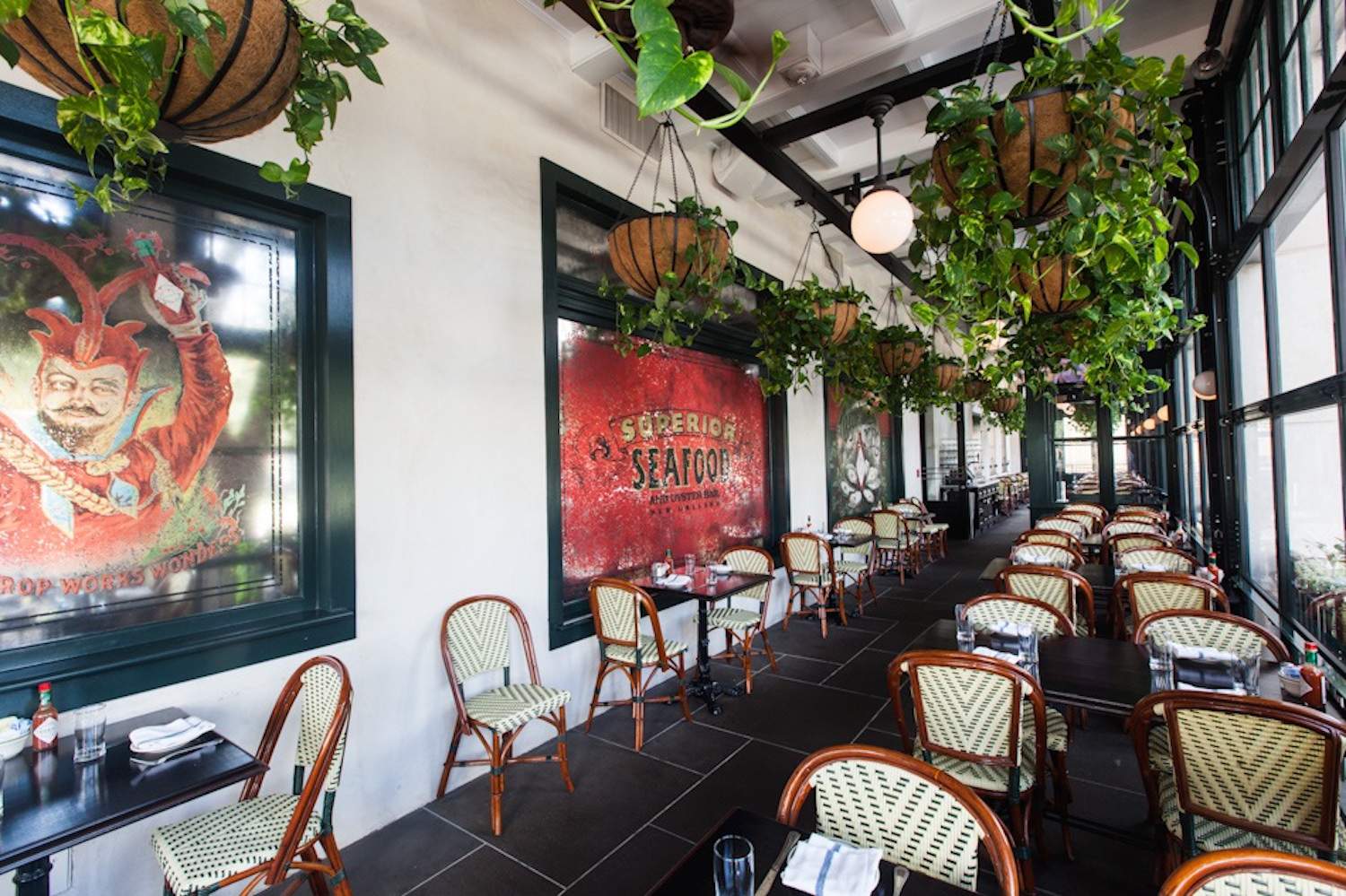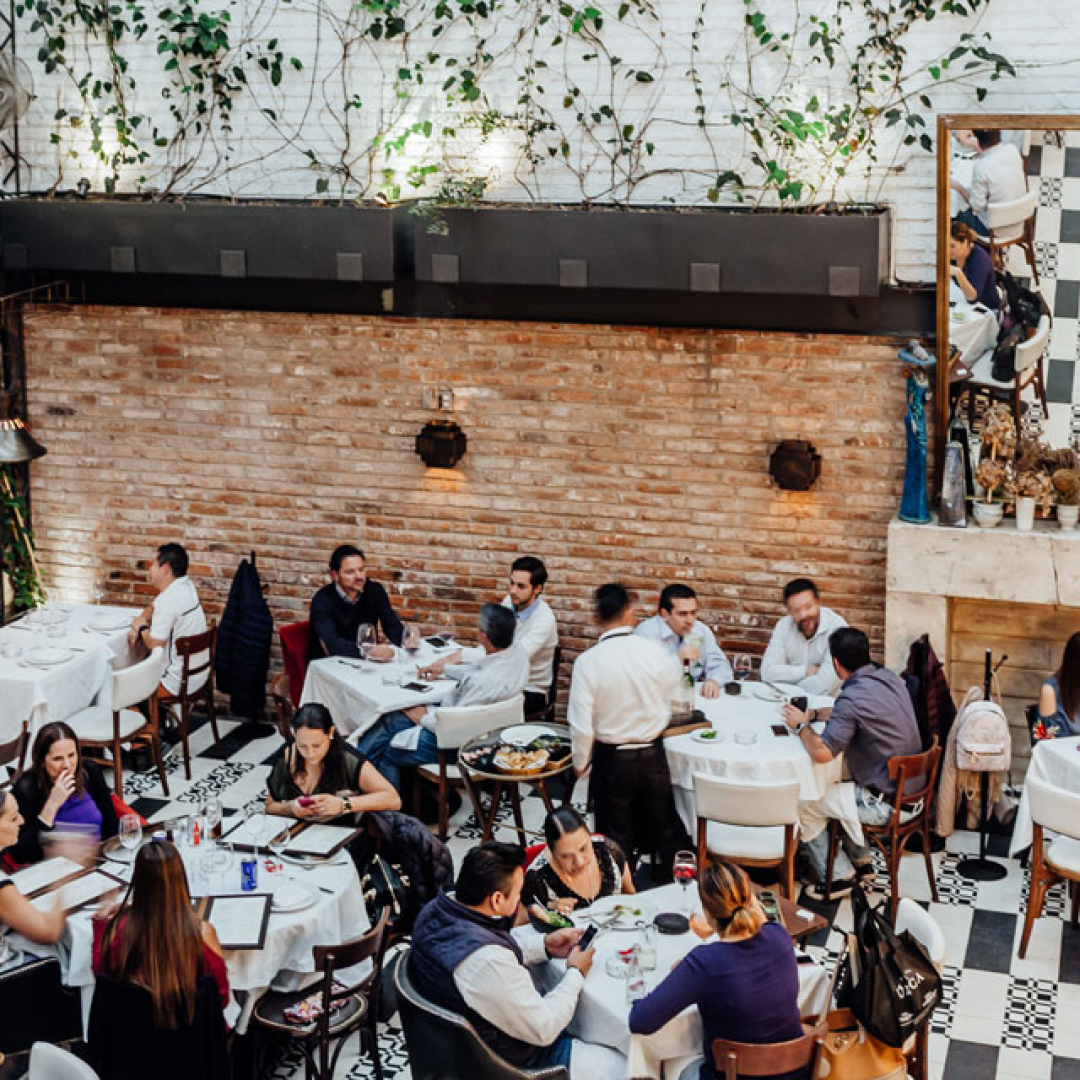New Orleans is a pretty one-of-a-kind place to dine out. It’s the only American city to have its own cuisine (Cajun, Creole) and, unlike a lot of popular dining locales, restaurants have been built into the fabric of NOLA society since the city’s inception.
“People have always come to New Orleans to eat,” says Shannon Derkacht of Sylvain. “It’s a way of life here for locals to eat out. There is this built-in group of food enthusiasts.” She adds that because of this, while cities like New York are defined by the finance industry and Los Angeles is defined by the film industry, New Orleans has long been defined by its food business—in fact, though this is much disputed, New Orleans claims to be home to the first restaurant in America, Antoine’s.
The centrality of the food industry is also evident in the fact that when Hurricane Katrina devastated the city in 2009, restaurants were some of the first businesses to bounce back—and since then, the number of places to eat in the city has grown exponentially. In the long run, according to Kelly Fields, chef/partner of Willa Jean, Katrina made the industry stronger, better, and more innovative, and brought chefs closer together.
“The community here in New Orleans is one that I have not experienced in any other city in America,” she says. “We are all in it together. If one place succeeds, we all succeed. We’ve been to hell and back because of Katrina, and we’re all still taking one step in front of the other to make our dreams come true.”
Because food permeates every aspect of New Orleans life, John Michael Rowland, General Manager at Superior Seafood & Oyster Bar, says that working in the restaurant industry really does feel like you are servicing the very heart of the culture. “People visit for the food and the culture that surrounds food,” he says. “Everywhere you go—whether it’s a restaurant or even a music festival, people are always talking about food.”
The challenges
Being in a city where food is the main attraction, though, means that tourists’ expectations tend to be higher than usual. “People see it as this truly unique food city, and it’s often tough to deliver on what people expect for a meal,” Rowland says. And it’s different from other traditional food cities like New York and San Francisco, where the scene is more broad and cosmopolitan—in New Orleans, people often come with the singular mission to eat and drink.
And as a result, both tourists and locals tend to want more traditional dining experiences—ones where the signature New Orleans hospitality and history is front and center. This means that for restaurants, change can be tough to do. “It’s so difficult to take something off a menu or even to paint a wall here,” Derkacht says. “People like their routines. They like their traditions.”
Speaking of tradition: while the licensing process for restaurants is substantially easier in New Orleans than it is in most cities, getting around the many historic landmark designations can be tricky. “New Orleans does such a great job in preserving its history and its architecture,” Rowland says. “But because of that, you are at the mercy of the historic landmarks commission in a lot of cases. There are renovations that we wanted to make that we just weren’t permitted to.” Derkacht adds that because the buildings are so old, restaurateurs should be ready to make more repairs than might expect to. “I’d say those things have been more challenging for me than acquiring a liquor license,” she says.
Tips for success
Put hospitality first. Derkacht says: “Guests in New Orleans are looking for entertainment, they are looking for the experience. People want to see those larger-than-life personalities anchoring a restaurant, more so than they do in other cities.”
Close on Mardi Gras. Most chefs tend to agree—Mardi Gras is one of the most important holidays in the city, and you’ll generate a lot of good will among your staff if you give them that time off to enjoy the day, particularly if you’re not on a parade route.
Don’t compromise on air conditioning. This may seem obvious, but Derkacht says a lot of first-time restaurateurs tend to underestimate how hot New Orleans will become during the summer. It can get up to 112 degrees during the warmest months, so be sure to overestimate on your electric bills, and spring for central air conditioning.
Go for the middle ground between casual and fine dining. According to Rowland, New Orleans’ diners are increasingly interested in value-driven restaurants that still deliver fine dining levels of hospitality. “People are looking for high-quality and high value, and happy hours are much bigger than they used to be,” he notes.
Make sure your restaurant tells a story. Both tourists and locals alike appreciate the little details—from the photos to the little antiques— that speak to the history of the city. “People don’t want those contemporary, cookie-cutter spots,” Fields says. “There’s a lack of chain restaurants in the city for a reason. People always want to know the story behind something.”
Hire local for your kitchen leadership. “It’s really difficult to get locals to love a place when you are bringing a chef in from out of town,” Derkacht says. “Even when there is a lot of PR surrounding the restaurant, those places don’t tend to last very long. People want to see someone from the area.”
Cater to the locals, not to the tourists. Yes, New Orleans tourism is booming. But Rowland says it’s the locals who dine out the most, and who will be the ones to make a restaurant successful. If you cater to them, in turn, he says, “they will lift you up, they will bring in the out of town guests.”





